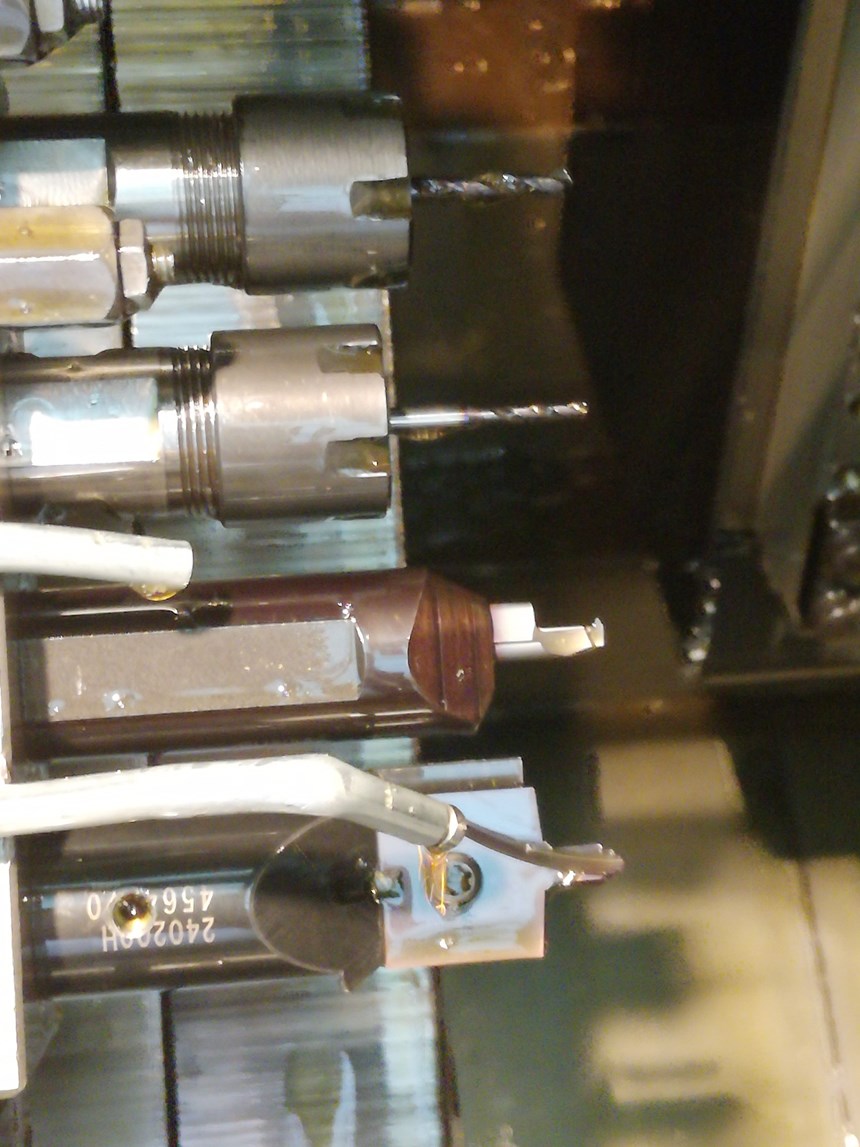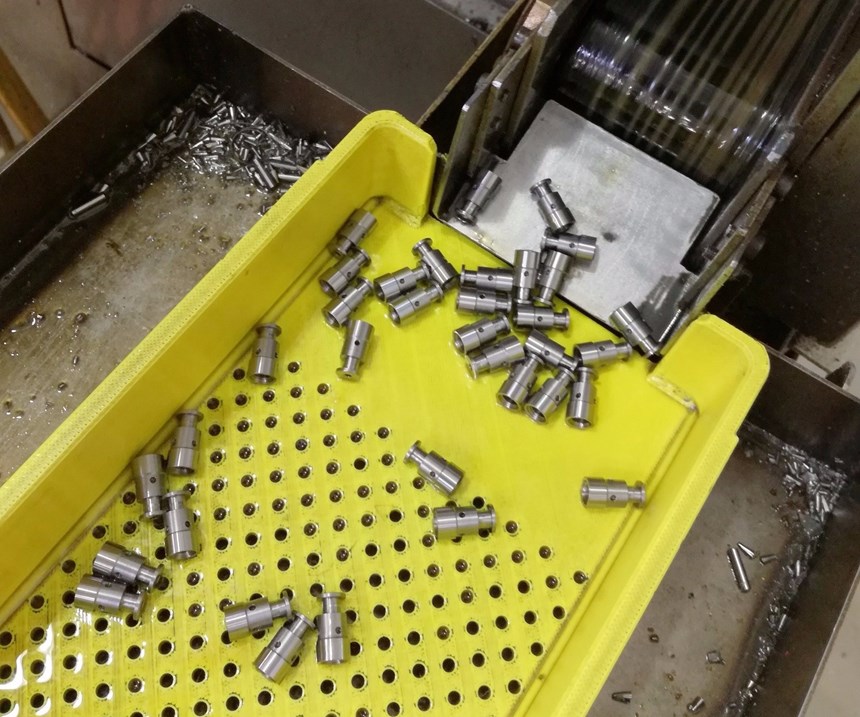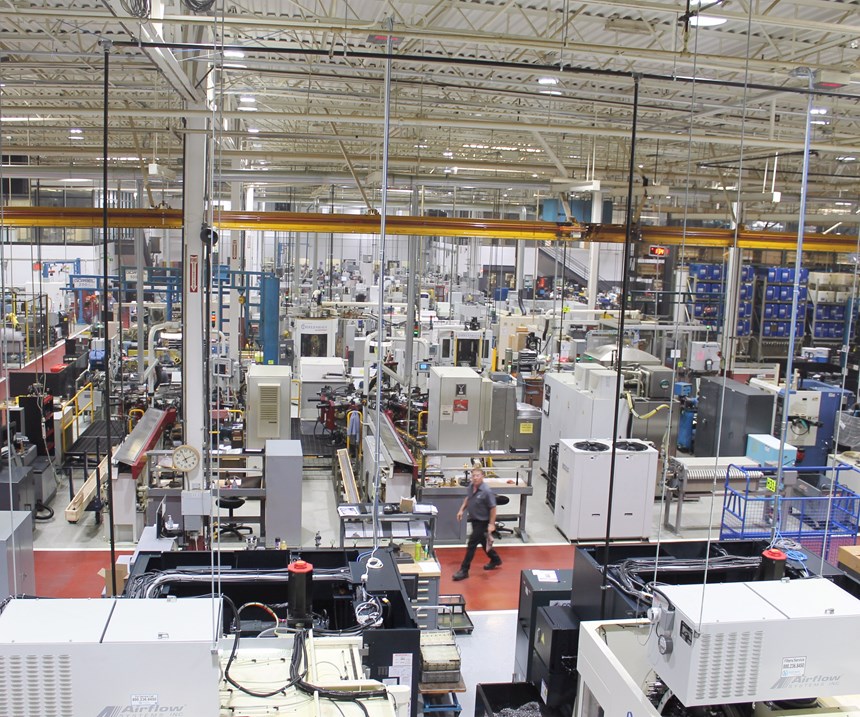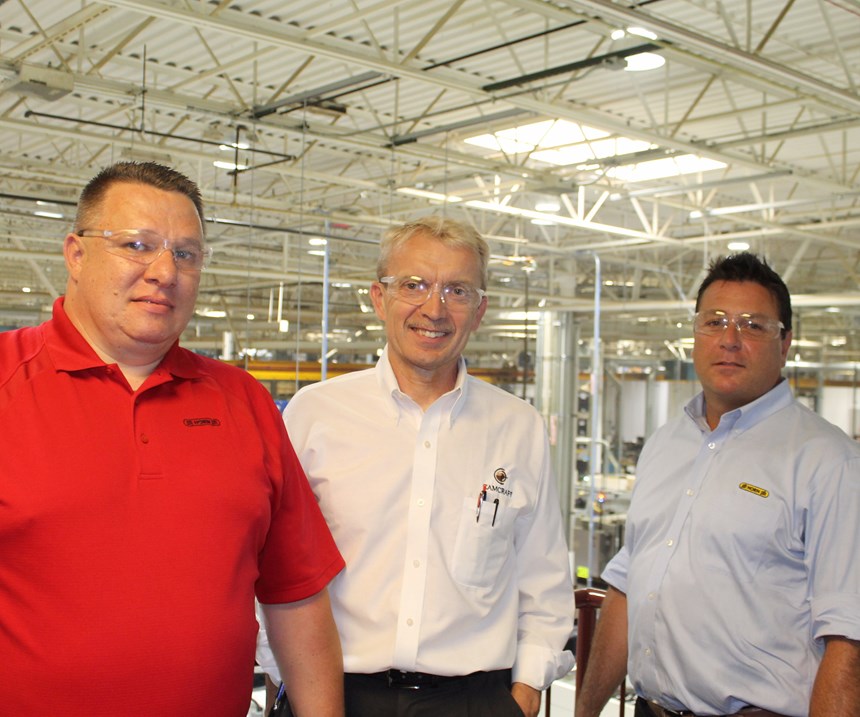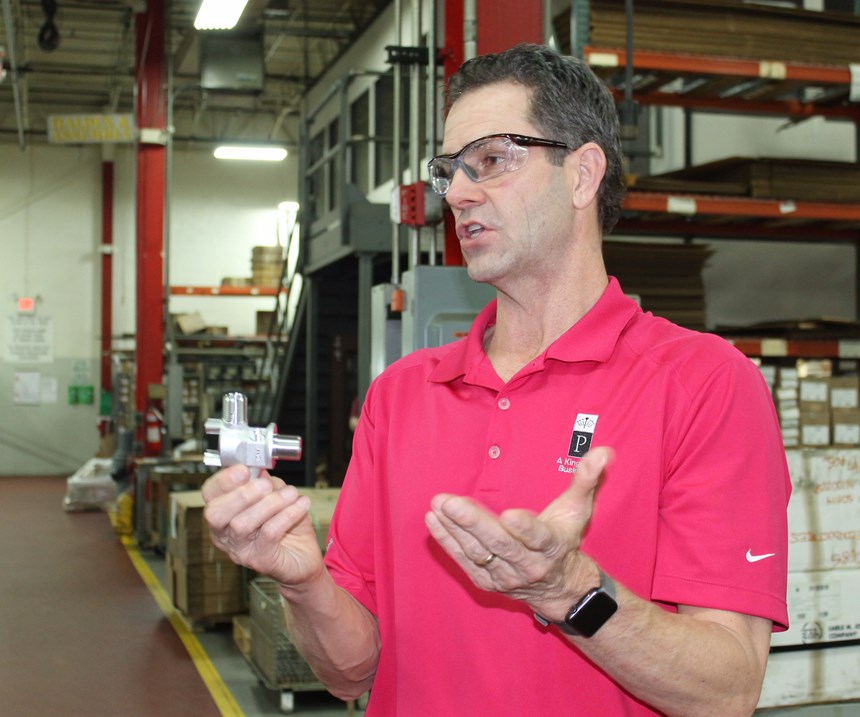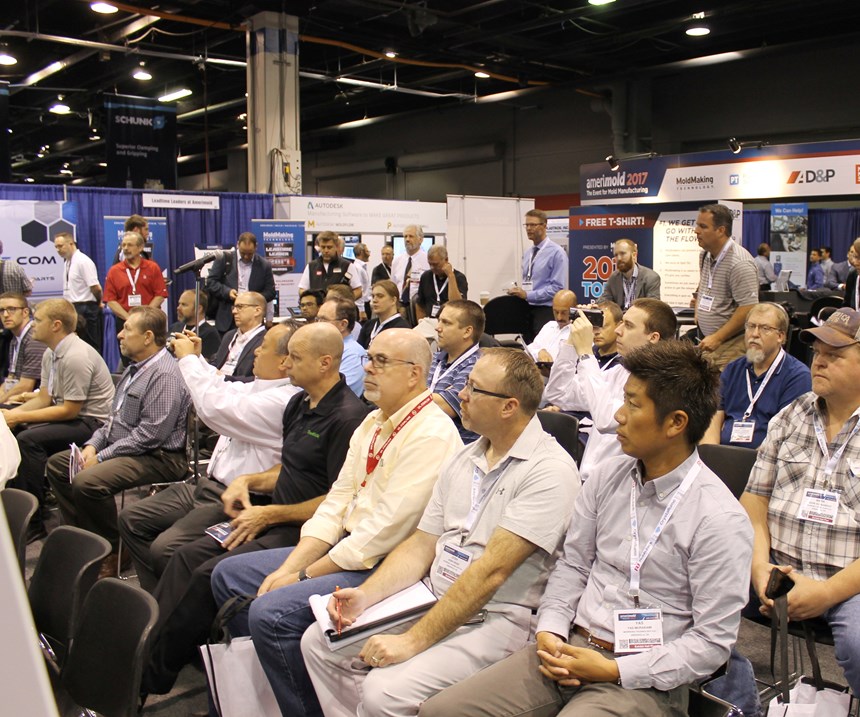Europe Meets USA
European Correspondent Barbara Schulz’s recent visit to U.S. shops revealed some of the technologies American manufacturers apply and the challenges they face as they work to become more globally competitive.
Share



When I flew from Germany to Rosemont, Illinois, to visit the Amerimold exhibition back in June, I decided to also use the opportunity to visit some shops in the Chicago area. The visits—kindly organized by Horn USA—were a real eye-opener, and they gave me some good insights into U.S. manufacturing operations.
Three themes emerged during my visits: Shops are using advanced equipment and technology, they are also using automation in various forms, and finally, I learned the importance of cultivating skilled shopfloor talent.
Visit 1: Swiss Technology, Training
The first stop of our tour was at Swiss Automation Inc. in Barrington, Illinois, one of the biggest shops focused on Swiss-type machining in the United States. Since its inception in 1984, the company has experienced constant growth, employing 236 people who manufacture turned parts mainly for the hydraulics industry. According to Vice President Vanessa Malo-Kurzinski, the company’s growth comes from quality. “People keep coming to us time and time again for our quality,” she says.
Despite its reputation and high-end equipment—including Citizen, Eurotech and Tornos machines, among others—Swiss Automation finds it hard to find people, as many other shops do as well. As a result, Vanessa says the company trains people from the ground up via its apprenticeship program. “People tend to stay for 20 or even 30 years on average, and my father, the company founder, is very proud of the machinists. He has a lot of respect for his people.”
Apart from training, the up-to-date machinery and technology attracts people to work at Swiss Automation. “We have been the first shop to have Swiss-type machines with a B-axis, and we try to only have the newest machines. Our people like new technology, and they like to work with the latest machines,” Ms. Malo-Kurzinski says.
Parts produced at Swiss Automation feature cross-hole drilling and tapping, slot milling, polygon milling, C-axis milling, miniature-hole drilling, pickoff with complex and extensive backworking, milling of non-conventional forms, and eccentric and off-center work. The company has recently added an additional manufacturing facility located in Cary, Illinois, which has seen Swiss Automation nearly double its production with the addition of more than 50 employees and 25 new machines.
[Watch: On an episode of The Cool Parts Show filmed at Swiss Automation, see how a robotic part handling application is aided by a 3D printed conveyor mat.]
Visit 2: Automation Abounds
The second visit lead me to Camcraft in Hanover Park, Illinois, and the level of automation found there was impressive. Since its inception in 1950, Camcraft has focused on providing solutions for the most demanding machined-parts applications. The company has gone from manufacturing parts on simple drill presses and mills to using advanced technologies from Index, Schutte, Weisser, DMG MORI, Takamatsu, FANUC, Hydromat, Euroturn and Citizen.
To remain competitive, the company has invested in new equipment and automation systems. Today, Camcraft runs 28 robotic cells with unloading, part-tending and inspection capabilities for unmanned machining, and it does all types of machining in house. Heat treating is outsourced.
“We have been growing about 5 percent per year on average,” says Janusz Ksel, director of manufacturing. “We run the newest technology and develop our customers’ products from the design stage to production. We also try to diversify as much as we can.
“We work hard every day to win our customers’ trust and business,” he says. “Having a reputation for on-time delivery is an important aspect of this philosophy.” According to Production Manager Linda McMillan, the company consistently maintains an on-time delivery rate above 99 percent, which is possible through regular meetings, real-time production tracking and continuous improvement.
Of course, companies like Camcraft need partners such as Horn in order to find the most efficient way of manufacturing a specific part. “We don’t need a supplier, we need a partner,” Mr. Ksel says. “If you have a nice machine but no support, there is no value in it. We are continuously tuning and improving our processes, even for projects that have been running for a year.”
Horn specializes in special tools and tries to offer customers like Camcraft a solution for the project to lower manufacturing costs or increase tool life. “It is a continuous relationship,” explains Tom Guzik, Horn USA application and sales engineer. “We try to help Camcraft improve their process. In high-volume manufacturing, special tools that eliminate one or two machining processes by combining them in one tool, for instance, can save the company a lot of money by saving machining time.”
For example, Mr. Guzik remembers replacing a drill and a boring bar with a single forming tool at Swiss Automation. The part had to be made on a smaller Swiss-type machine, which simply couldn’t accommodate the number of tools necessary for the inner-diameter machining process. Mr. Guzik came up with a special forming tool that saved a tool position and cycle time by running the job on a smaller machine. According to Mr. Guzik, the costs for running parts on a bigger machine was anywhere from $80 to $150 per hour, while it is around $45 to $65 per hour to run it on a smaller machine. “If you are producing 50 parts per hour, the savings are, of course, significant.”
Visit 3: Growth through Advanced Equipment
After facing some soft years in terms of growth, Prince Industries (Carol Stream, Illinois) is on a growth path again this year after broadening its product offerings and developing new markets. Additionally, the company’s biggest customer, Caterpillar, is seeing upward momentum again, CEO Mark Miller says. “This year has been very good so far. We have found new customers, and the investments in new developments are paying off now with products going into production.”
The company has expanded its capabilities over the years and has the latest in CNC equipment technology. The various manufacturing platforms include a machining platform, swiss machining, multiplex turning, grinding, honing, and a sheet-metal-fabrication division with laser cutters, forming, welding and particle painting.
The business is gaining momentum, but Mr. Miller and his team have the same battles to fight as most manufacturers these days: a lack of skilled people. “We are very busy right now and cannot even find entry-level people,” he says.
Related Content
Automation is for Everyone
Not just for large shops, automation can help even the smallest shops solve labor challenges and become more profitable and efficient.
Read MoreWhere Micro-Laser Machining Is the Focus
A company that was once a consulting firm has become a successful micro-laser machine shop producing complex parts and features that most traditional CNC shops cannot machine.
Read MoreA History of Precision: The Invention and Evolution of Swiss-Style Machining
In the late 1800s, a new technology — Swiss-type machines — emerged to serve Switzerland’s growing watchmaking industry. Today, Swiss-machined parts are ubiquitous, and there’s a good reason for that: No other machining technology can produce tiny, complex components more efficiently or at higher quality.
Read MoreAdditive/Subtractive Hybrid CNC Machine Tools Continue to Make Gains (Includes Video)
The hybrid machine tool is an idea that continues to advance. Two important developments of recent years expand the possibilities for this platform.
Read More


